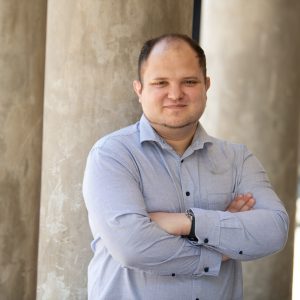Synthesis had the pleasure of joining the School for Electrical, Electronic and Computer Engineering as external judges on their final year projects day. Close to sixty students presented their projects on the day.
A wide variety of projects were presented, ranging from projects focussing on the hardware development process, control systems, image processing, machine learning, pure software based projects and projects that stood in both the hardware as well as the software camps.
Students and judges were paired up based on the type of project and the judges’ field of expertise. Judging was not only based on the technical aspects of the projects, but also the students’ skill in presenting their work. Of the projects we judged, the following few stood out.
A common problem when blasting at quarries, is to ensure the rocks are of a certain size before loading them into the crushers. The Rock size determination from image project by Evert van Dyk used image processing to analyze photos of a blast site to identify the different rock sizes and give you a summary of the different sizes present in the images.
Nico-Paul Bester’s project, Using image processing to generate bicycle setup advice, used image processing to analyze a video of a cyclist riding his bike on a trainer. The video was used to identify the person’s joints and the angles between the joints on different parts of a stroke. Based on this information his application made recommendations on optimizations to your bike setup.

In the end the project that really caught our attention was the *Visualisation of Temperature Distribution in a Lithium-ion Battery Pack* by Adam Aucamp. The project seemed especially relevant taking into account how well the NWU has been doing with their Solar Car, Naledi (http://engineering.nwu.ac.za/solar-car/naledi). By placing multiple temperature sensors in the battery pack, he was able to collect and stream temperature data using a data acquisition device (DAQ). This data was then displayed and analyzed a computer. The application was able to give detailed feedback on the temperatures in the battery pack and warn the user if the batteries were being used outside safe operating temperatures.
Aucamp developed the DAQ as well as the software to analyze and display the data, he was able to find that fine balance between using 3rd party tools and APIs and building his own hardware and software. His solution and presentation was well polished and had a “ready for market” feel. Synthesis awarded Aucamp with the prize for the project with the best software.

We would like to congratulate the students on their projects and wish them all the best in their future endeavours.
By: Paul Zietsman, Synthesis Software Technologies






